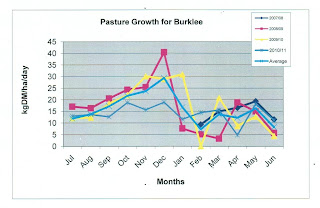These ewes are 2-tooth and 4-tooth (2 & 3 year olds) with the 2-tooths having lambs for the first time. Our ewes are from a Romney base, and have had Coopworth introduced, so range from full Coopworth to half Coopworth.
The ewes and lambs are drafted, with the lambs into a small catching pen, and the ewes straight ahead.
Once the lambs are separated we 'dock' the lambs. In the South Island it is known as tailing. So, what to do we do when we dock and why:
- We have someone picking up and putting the lambs in a shute. Their job is to keep the shute full at all times.
- The lambs are treated for ticks, as this area is prone to them. They can cause paralysis and death in the lambs if the infestation is great.
- Each lamb is given an earmark. This does two roles - it identifies who the owner of the lamb is by it's unique mark, and ewe and ram lambs are marked in different ears. In our case we mark ewe lambs in the right ear and males in the left with our 'station' mark which is a 'Y' shape at the end of the ear. The ear marks also help for drafting later when separating the sexes. Later on at weaning we will age mark the ewe lambs, so that we know what year they were born in.
- Finally, the lambs get their tails removed. We do this by a gas iron. The tails are removed as there is a high risk of lambs/sheep having 'daggy' or dirty bottoms. In the warm months of the year this can lead to an infestation of 'fly' which lay their eggs in the wool and cause ill-health to the animal through being eaten alive and irritated. To prevent fly in the sealed wound, we apply a treatment, Vetrazin.
- Once the lambs are 'docked' they are then reunited with their mums and back out into the paddock.
There are many different 'docking' routines or systems, often depending on animal health issues in your area such as Scabie Mouth, some vaccinate ewe lambs and/or all lambs with a 5 in 1, some drench, some use rubber rings, some castrate the males ... so there is no set system.
Yesterday we had the girls helping and managed to get the first 200 lambs docked. Tomorrow with weather permitting we hope to do another small day.








